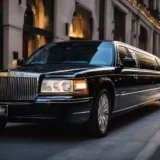In the fast-paced world of social media, capturing your audience’s attention on platforms like Facebook is more challenging than ever. To stand out and engage effectively, crafting visually appealing content is essential. Visual content has the power to convey messages quickly, evoke emotions, and leave a lasting impression on your audience. In this article, we’ll explore the importance of visual content on Facebook and provide strategies for creating eye-catching posts that leave a mark.
The Significance of Visual Content
Visual content plays a crucial role in your Facebook marketing strategy for several reasons:
1. Immediate Impact:
Visuals have an immediate impact and can convey complex information in a digestible format. Users can quickly grasp your message without the need for extensive reading.
2. Emotional Connection:
Visuals can evoke emotions, whether it’s through vibrant colors, striking imagery, or relatable graphics. Emotionally resonant content tends to engage more effectively.
3. Improved Engagement:
Studies have shown that visual content generates higher engagement rates compared to text-only posts. It encourages likes, comments, shares, and click-throughs.
4. Brand Recognition:
Consistent visual branding helps establish your brand identity. Memorable visuals can lead to better brand recognition and recall among your audience.
Strategies for Crafting Eye-Catching Visual Content
To create visually appealing content that captivates your Facebook audience, consider implementing the following strategies:
1. Use High-Quality Images:
Invest in high-resolution images that are clear and crisp. Blurry or pixelated visuals can detract from the overall quality of your content.
2. Infographics and Data Visualization:
Present complex data and information through visually appealing infographics. Simplify data using charts, graphs, and diagrams to make it more accessible.
3. Video Content:
Videos are incredibly engaging on Facebook. Create short, attention-grabbing videos that showcase your products, share testimonials, or tell a compelling story.
4. Custom Graphics and Illustrations:
Design custom graphics and illustrations that align with your brand’s style and messaging. Unique visuals can set you apart from competitors.
5. Use Typography Effectively:
Choose fonts that complement your brand and message. Use typography creatively to emphasize key points and make text visually interesting.
6. Colors and Contrast:
Use a consistent color palette that reflects your brand’s identity. Pay attention to color contrast to ensure readability and visual impact.
7. Incorporate User-Generated Content:
Encourage your audience to create and share content related to your brand. Repost user-generated content with their permission to build trust and authenticity.
8. Storytelling through Visuals:
Tell stories through visuals. Use sequential imagery or graphics to convey a narrative or illustrate a process.
9. Consistent Branding:
Maintain a consistent visual branding across all your Facebook posts. This includes using consistent colors, fonts, and logo placement.
10. Interactive Content:
Create interactive content like polls, quizzes, and interactive graphics that encourage user engagement and participation.
11. Optimize for Mobile:
Ensure that your visuals are mobile-friendly. Mobile users make up a significant portion of Facebook’s audience, so your content should be easily viewable on smaller screens.
Industry-Specific Considerations
The type of visual content that works best can vary by industry and audience. Here are some industry-specific considerations:
1. E-commerce and Retail:
Showcase your products through high-quality images and videos. Consider using lifestyle photography to demonstrate product usage.
2. B2B and Professional Services:
Create visually appealing charts and infographics that convey industry trends and statistics. Use custom graphics to illustrate complex concepts.
3. Food and Beverage:
Leverage mouthwatering food photography and videos to entice your audience. Share behind-the-scenes glimpses of your culinary creations.
4. Travel and Hospitality:
Showcase stunning destination photos, travel itineraries, and accommodation visuals. Use videos to provide virtual tours of your properties.
The Role of Scheduling Tools
To streamline your visual content strategy on Facebook, consider using scheduling tools or social media management platforms. These tools allow you to plan and schedule your visual content in advance, ensuring that your posts are published at optimal times, even when you’re not online.
Consistency and Adaptation
Consistency in your visual content strategy is vital for building brand recognition. However, adaptation is equally important. Stay attuned to changes in design trends, user preferences, and platform features. Be prepared to adjust your visual content strategy to remain relevant and engaging.
Conclusion
Crafting eye-catching visual content is a key component of a successful visual marketing strategy. By understanding the impact of visuals, using high-quality images and videos, and consistently applying your brand’s visual identity, you can effectively engage your audience and make a lasting impression.
Remember that your visual content should align with your brand’s values and messaging while catering to your audience’s interests and preferences. By combining the power of visual storytelling with a thoughtful and consistent content approach, you can maximize your impact on Facebook and leave a lasting mark in the hearts and minds of your audience.










